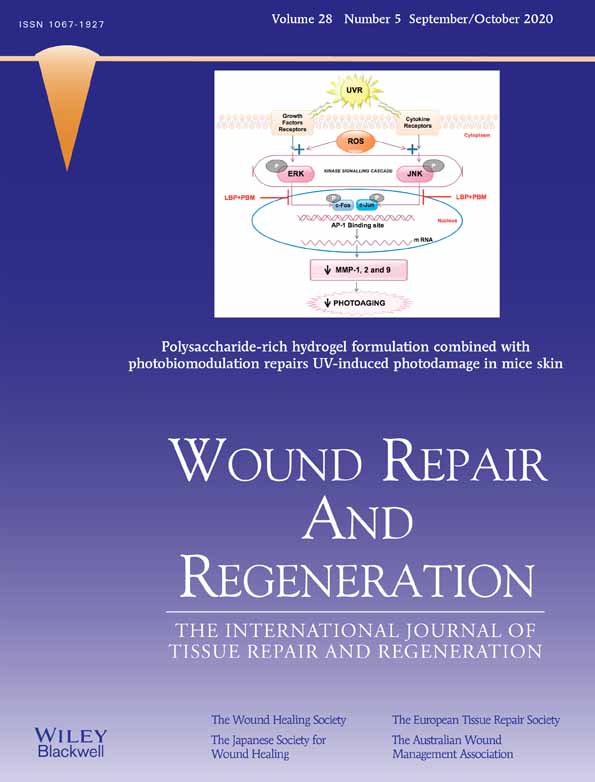Epidemiological characteristics and clinical analyses of chronic cutaneous wounds of inpatients in China: Prevention and control
Biao Cheng and Yufeng Jiang contributed equally to this study.
The geographical regions, which are divided into east and west, use Hu Huanyong's Line as the border between them, and the regions, which are divided into north and south, use the Qinling-Huaihe River as the border.
Funding information: Consulting project of Chinese Academy of Engineering, Grant/Award Number: 2015-XY-45; National Nature Science Foundation of China, Grant/Award Numbers: 81721092, 81830064; the National Key R&D Program of China, Grant/Award Number: 2017YFC1103300
Abstract
The increased incidence of chronic cutaneous wounds is likely to lead to increased mortality, and therefore, deserves greater attention. More insight is needed into the magnitude of the problem of chronic cutaneous wounds and methods for their prevention and treatment in China. A retrospective analysis of data retrieved from an electronic health-records database on 3300 patients with chronic skin wounds was conducted from 1 January 2018 to 31 December 2018. The patients had been admitted to the medical and surgical wards of 17 third-grade class-A hospitals in China. The study's aim was to compare the characteristics (eg, demographic and clinical) associated with different causes and distributions of patients' chronic wounds. Among the 3300 patients, 66.03% were males and 33.97% were females. The mean age was 57 years and the increasing prevalence of chronic skin wounds with aging was quite high. The primary causes of chronic wounds were diabetes or infection, followed by pressure ulcers, trauma, and iatrogenic wounds. The distribution of skin wounds was mainly in the lower extremities (56.1%), followed by the trunk (18.6%). The mean duration of hospital stay was 29 days and the mean recurrence was 3 months. Chronic skin wounds were related to occupation, educational level, lifestyle habits, and income. The main cause of chronic skin wounds has shifted from trauma to chronic disease. Normalization checks, bacterial cultures, and antibiotic use in China need to be standardized and the training of wound specialists should be further strengthened. The association of aging and wound infection was significant. Preventive management and efficient treatment should correspond to the needs of the different regions of China. These results may serve as a reference for other developing countries in their transitional development.
CONFLICT OF INTEREST
The authors declare no potential conflict of interest.




